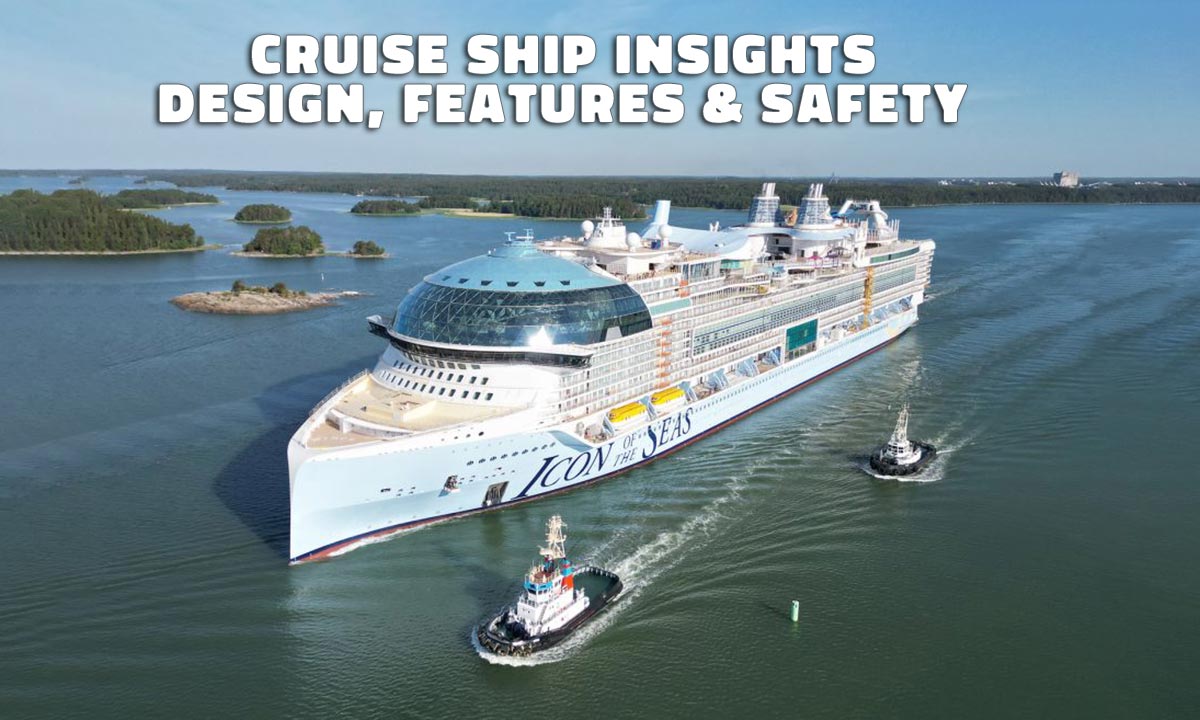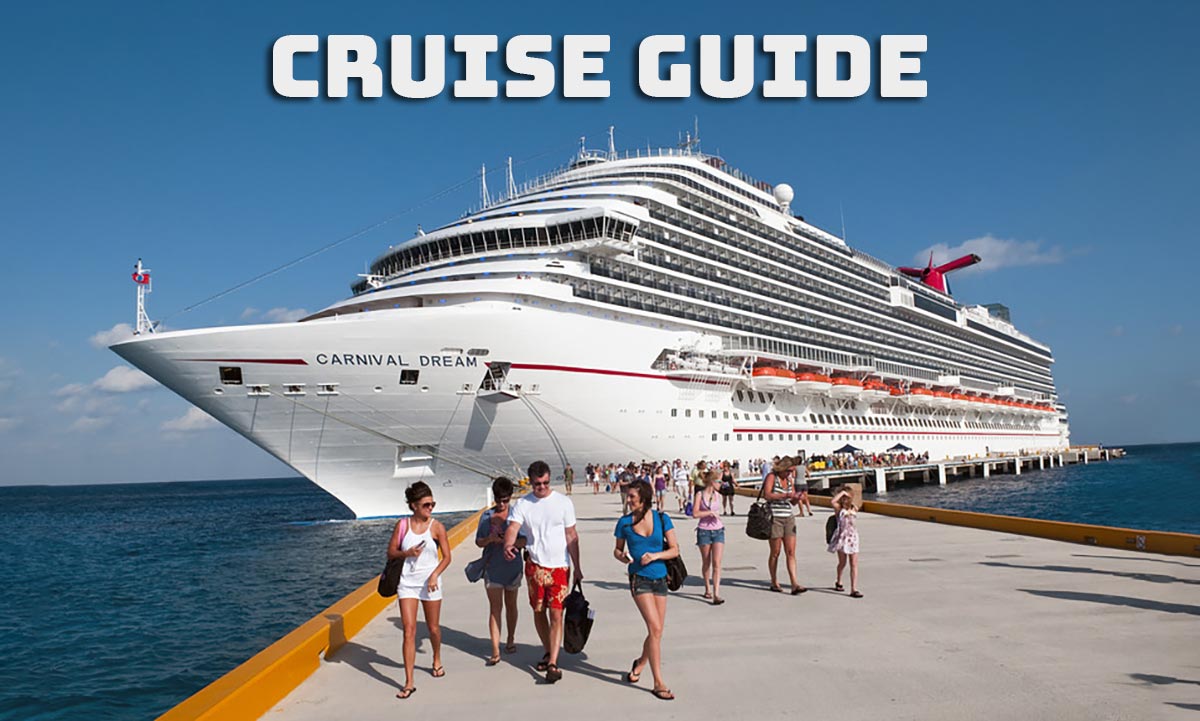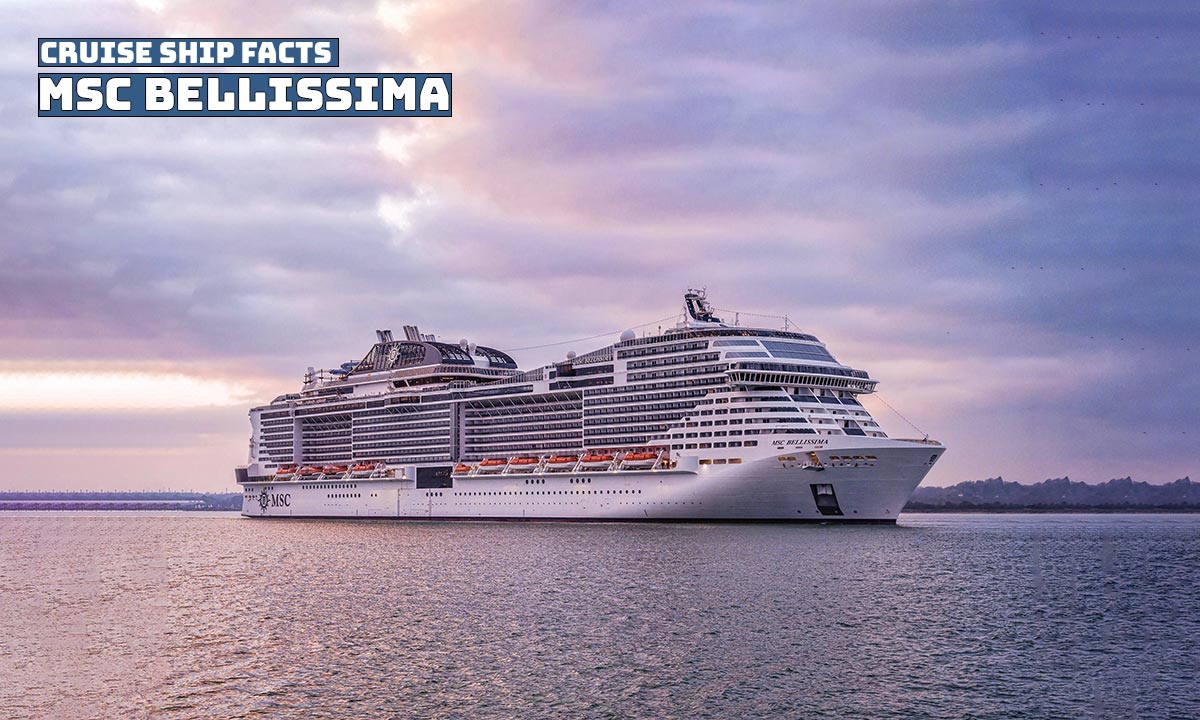Cruising is a beloved way to explore the world, offering travellers the luxury of a floating hotel while hopping from one destination to another. The popularity of cruising has led to certain ports becoming bustling hubs for these majestic vessels. Here’s a look at the top 20 most popular cruise ports by passenger visit in the world:
Table of Contents
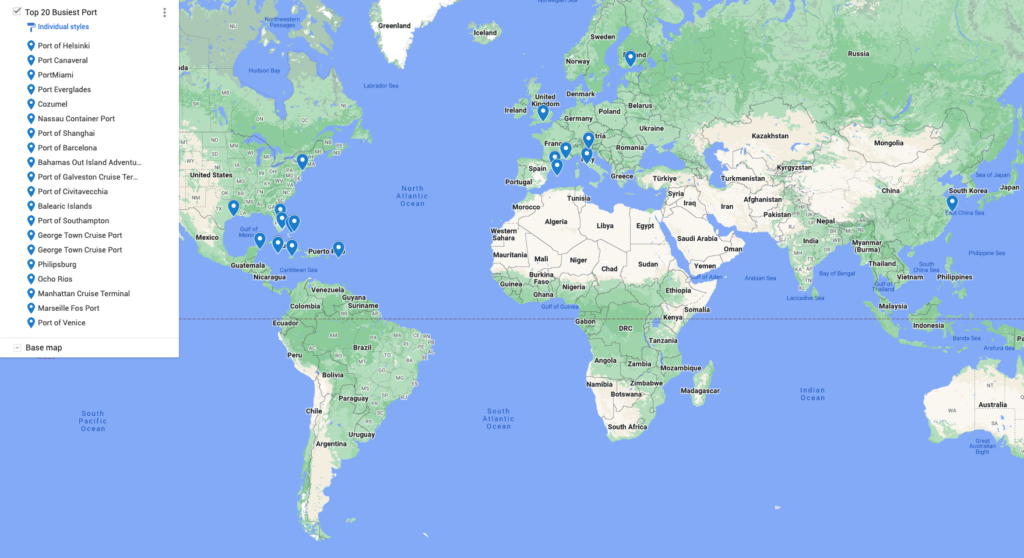
1. Port of Helsinki
The Port of Helsinki, known in Finnish as “Helsingin Satama” and in Swedish as “Helsingfors Hamn”, stands as one of Europe’s busiest passenger ports and serves as the primary port for foreign trade in Finland. Located in the heart of the Finnish capital, Helsinki, this port is a significant hub for both passenger and cargo traffic.
For travellers, the port offers regular liner connections to various destinations, including Tallinn, Stockholm, Saint Petersburg, and Travemünde. In 2018, the port recorded a total passenger volume of 11.6 million, with an additional 520,000 passenger arrivals from international cruise ships.
On the cargo front, the Port of Helsinki transported a whopping 14.7 million tonnes of goods in 2018. It primarily deals with exports like forest industry products and machinery, while imports are dominated by daily consumer goods.
The port comprises three active harbours:
- South Harbour: Located right next to Helsinki’s city centre, it’s a hub for Silja Line and Viking Line, offering services to Stockholm and Tallinn.
- West Harbour: Situated in the Jätkäsaari district, it has two terminals and serves destinations like St Petersburg and Tallinn.
- Vuosaari Harbour: Opened in 2008, this harbour in the Vuosaari suburb is primarily for container and Roll-on/roll-off traffic, with some passenger services to Travemünde.
Owned by the city of Helsinki, the port’s operations are managed by Port of Helsinki Ltd. In a strategic move, the Port of Helsinki acquired a majority stake in the Port of Loviisa in 2017, located about 70 kilometres east of Helsinki.
The Port of Helsinki’s significance in maritime trade and its contribution to the city’s economy categorises Helsinki as a Large-Port City.
2. Port Canaveral
Port Canaveral is a significant cruise, cargo, and naval port located in Brevard County, Florida, United States. It holds the distinction of being the world’s busiest cruise port, with over 4 million passengers passing through in the 2022 financial year. The port also handles over 5.4 million tonnes of bulk cargo annually. The primary cargoes that pass through the port include slag, salt, vehicles, containers, petroleum, heavy equipment, lumber, and aggregate. The port has facilities for loading products directly into trucks and for handling bulk cargo containers. The channel depth is approximately 44 feet (13 m).
The port plays a crucial role in exporting fresh citrus, bulk-frozen citrus juice, cement, and building materials. It also imports lumber, salt for water-softening, automobiles, and steel sheet and plates. The port acts as a transhipment hub for various items for land, sea, air, and space. On average, ten ships, including those from major cruise lines like Carnival, Disney, Royal Caribbean, and Norwegian, enter the port daily. The Canaveral Port Authority owns and operates Jetty Park, which saw 325,000 visitors in 2016.
3. Port Miami
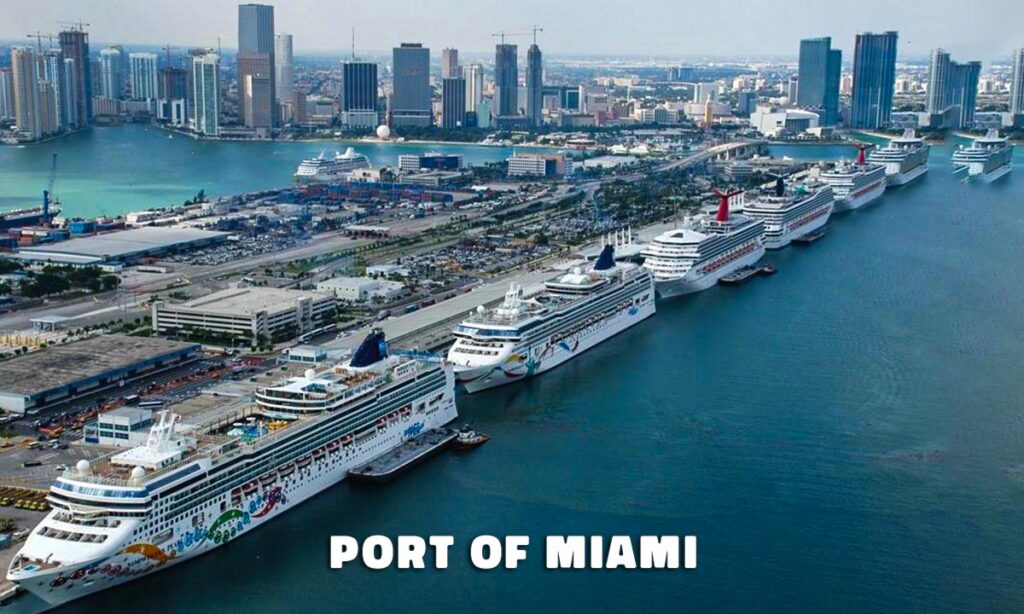
PortMiami, formally known as the Dante B. Fascell Port of Miami, is a significant seaport situated in Biscayne Bay at the Miami River’s mouth in Miami, Florida. Recognized as the world’s largest passenger port, it also ranks among the top cargo ports in the U.S. The port occupies Dodge, Lummus, and Sam’s Islands, which are a fusion of three historical islands. A causeway over the Intracoastal Waterway, known as Port Boulevard, connects it to Downtown Miami, while the PortMiami Tunnel links it to the neighbouring Watson Island. The port is named in honor of Dante Fascell, a 19-term Florida Congressman. As of 2018, PortMiami contributed to approximately 334,500 jobs and had an annual economic impact of $43 billion on Florida.
4. Port Everglades
Port Everglades is a significant seaport situated in Fort Lauderdale, Florida, within Broward County. Recognized as one of South Florida’s primary economic drivers, the port acts as a crucial gateway for international trade and cruise vacations. In 2022, it was the third-busiest cruise homeport globally, serving over 1.72 million passengers. Additionally, Port Everglades has made significant strides in its cargo sector, ranking high among 348 global seaports based on operational performance.
The port plays a pivotal role in Florida’s energy sector, being a primary seaport for energy products like gasoline, jet fuel, and alternative fuels. It is the main storage and distribution hub for refined petroleum products, supplying fuel to 12 Florida counties and jet fuel to four international airports.
Financially, Port Everglades is a self-sustaining enterprise fund of Broward County’s government. In the Fiscal Year 2022, it generated operating revenues of about $151.7 million. The port doesn’t depend on local property taxes for its operations. The total economic activity value at Port Everglades is roughly $33 billion annually. The port influences approximately 216,000 jobs statewide, with nearly 9,600 individuals working for companies offering direct services to Port Everglades.
5. Port of Cozumel
The Port of Cozumel, located in San Miguel de Cozumel, is the largest city in Cozumel Municipality in the Mexican state of Quintana Roo. Serving as a hub for tourism on the Riviera Maya, it provides the only ferry connections between the Mexican mainland and the island. The port boasts the Cozumel International Seaport, which has the capacity to accommodate two cruise ships simultaneously. The exterior band can host voyager class ships of 140,000 displacement tons, while the interior band can cater to ships up to 85,000 displacement tons. Additionally, a tender wharf is present for smaller boats.
In terms of traffic, Cozumel ranks as the 4th world passenger port, with a traffic volume of 3.3 million. The types of vessels that frequent the port include Passenger Ships, Sailing Vessels, Pleasure Crafts, and Ro-Ro/Passenger Ships. The port plays a vital role in the region’s economy and tourism, making it a significant maritime hub in the Caribbean.
6. Nassau, Bahamas
Nassau is the capital and largest city of The Bahamas, situated on the island of New Providence. As of 2010, the city had a population of 246,329, which is over 70% of the entire population of The Bahamas. By April 2023, the population of New Providence was reported to be 296,522, making up 74.26% of the country’s total population. Nassau plays a pivotal role in the nation, serving as its center for commerce, education, law, administration, and media.
Historically, Nassau was considered a stronghold for pirates. The city was named in honor of William III of England, Prince of Orange-Nassau. Modern growth in Nassau began in the late 18th century when many Loyalists and their slaves migrated to The Bahamas after the American War of Independence. Over time, Nassau expanded and dominated the entire island of New Providence.
Lynden Pindling International Airport, the primary airport for The Bahamas, is located about 16 km west of Nassau’s city center. The city is also home to the House of Assembly and various judicial departments. Notably, Nassau has a rich history intertwined with piracy, with infamous pirates like Blackbeard once calling it home.
In terms of tourism, Nassau’s harbor, with its blend of old-world and colonial architecture, is a major attraction. The city’s proximity to the United States has made it a popular tourist destination, especially with the travel restrictions to Cuba. The Atlantis resort on nearby Paradise Island is a significant contributor to the city’s tourism.
7. Port of Shanghai
The Port of Shanghai, known in Chinese as “上海港” (Shànghǎi Gǎng), is situated near Shanghai and consists of both a deep-sea port and a river port. Managed by the Shanghai International Port Group (SIPG), the port has witnessed significant growth over the years. In 2010, it surpassed the Port of Singapore, becoming the world’s busiest container port. By 2019, it handled a staggering 43.3 million TEU (Twenty-Foot Equivalent Units).
The port’s strategic location at the confluence of the Yangtze River, Huangpu River, and Qiantang River makes it a vital transport hub. Geographically, it faces the East China Sea to the east and Hangzhou Bay to the south. The port’s history traces back to 1842 when Shanghai became a treaty port, evolving into East Asia’s largest city and port by the early 20th century.
Shanghai’s port is not only significant for container traffic but also plays a crucial role in the Yangtze River region’s transport, serving as a primary gateway for international trade. The port’s economic influence extends to the hinterland of Anhui, Jiangsu, Zhejiang, and Henan provinces, known for their dense populations, industrial bases, and developed agricultural sectors.
8. Port of Barcelona
The Port of Barcelona, located in Barcelona, Catalonia, Spain, is a significant maritime hub. Covering an area of 7.86 km^2, it is divided into three distinct zones: Port Vell (the Old Port), the commercial/industrial port, and the logistics port (Barcelona Free Port). The port’s management falls under the Port Authority of Barcelona, a subsidiary of the state-owned Ports of the State.
In 2018, the Port of Barcelona saw the arrival of 9,038 vessels, handled an annual cargo tonnage of 67,756,258 tonnes, a container volume of 3,422,978 TEUs, and a passenger traffic of 4,493,646. This makes it the third-largest container port in Spain and the ninth-largest in Europe. Moreover, it holds the distinction of being the Mediterranean’s top cruiser port in terms of passenger numbers.
The port’s history can be traced back to 1842 when Shanghai was designated a treaty port. Over the years, it has evolved and expanded, playing a pivotal role in international trade and serving as a primary gateway for the Yangtze River region. The port’s influence extends to the hinterland of several provinces, making it an essential part of Spain’s maritime infrastructure.
9. Out Islands
The Out Islands, also known as the Family Islands, encompass the islands that make up the Bahamas, excluding New Providence Island (where Nassau, the capital and largest city, is located) and Grand Bahama Island (home to Freeport). Among the Out Islands, the Abaco Islands and Eleuthera islands are notable. There are approximately 700 Out Islands, but only a few are inhabited.
Historically, the Out Islands have seen significant influence from American Loyalists who migrated to the Bahamas after the American Revolution, along with their slaves. This migration had a profound impact on the islands’ history. By the start of the 20th century, over 75% of all Bahamians resided in the Out Islands. However, by the 1970s, the majority shifted to Nassau or other parts of New Providence Island due to limited job opportunities in the Out Islands.
Economically, the Out Islands have historically faced challenges due to their small size and lack of natural resources. However, tourism has become a significant economic driver, with attractions like beaches, snorkeling, and scuba diving drawing visitors. The relative importance of shark diving in the Out Islands is also noteworthy.
10. Port of Galveston
The Port of Galveston, situated in Galveston, Texas, USA, boasts a rich history, having been established by a proclamation from the Congress of Mexico on October 17, 1825, when Texas was still a part of Mexico. It holds the distinction of being the Gulf of Mexico’s oldest port west of New Orleans. Located on Galveston Island’s eastern end, the port is about 9.3 miles from the open Gulf, translating to roughly 30 minutes of sailing time. The City of Galveston owns the port, and its management is overseen by the Galveston Wharves’ board of trustees. Notably, the port is self-sustaining and does not rely on taxpayer funding.
In 2018, the port recorded 840 vessel arrivals, handled cargo tonnage of 4,104,867 short tons, and saw passenger traffic of 1,966,178. Historically, during the late 19th century, the port was the Gulf Coast’s busiest and was second only to New York City’s port in the country. Cotton was its primary export. The port has also played a significant role in immigration, with nearly 50,000 individuals entering the US between 1906 and 1914.
The cruise industry has become a significant revenue source for the Port of Galveston. As of 2019, it was North America’s fourth-busiest cruise ship homeport. Over the years, major cruise lines, including Carnival, Royal Caribbean, Princess, Disney, and Norwegian, have operated from this port.
11. Port of Civitavecchia
The Port of Civitavecchia, often referred to as the “Port of Rome” or “Civitavecchia Port of Rome,” is located in Civitavecchia within the Metropolitan City of Rome, Italy. Serving as a significant hub for maritime transport in Italy, this port is essential for both goods and passengers. In 2014, the port recorded an annual container volume of 64,387 TEUs, cargo value of 15,587,776, and a passenger traffic of 1,473,269. Additionally, the port saw a traffic of 2,141,195 in the same year.
The Rome Cruise Terminal is an integral part of the port, catering to the needs of cruise passengers. As a component of the “Motorways of the Sea,” the Port of Civitavecchia connects to various Mediterranean ports and stands as one of the primary maritime links between the Italian mainland and the island of Sardinia.
For more details, you can visit the official website of the Port of Civitavecchia.
12. Balearic Islands
The Balearic Islands, known as “Illes Balears” in Catalan and “Islas Baleares” in Spanish, are an archipelago located in the western Mediterranean Sea, close to the eastern coast of the Iberian Peninsula. They form both a province and an autonomous community of Spain, with Palma de Mallorca as its capital and largest city. Historically, the islands were part of the Kingdom of Mallorca and became a province in the 19th century. In 1983, they attained a Statute of Autonomy, which was later reformed in 2007, designating the Balearic Islands as one of Spain’s nationalities. The official languages are Catalan and Spanish. The archipelago consists of several islands, with the major ones being Ibiza, Formentera, Mallorca, and Menorca. These islands are known for their Mediterranean climate and are popular tourist destinations. Ibiza, for instance, is globally recognized as a party hotspot, drawing renowned DJs and party-goers from around the world. The culture and cuisine of the islands, while similar to mainland Spain, have unique characteristics.
13. Port of Southampton
The Port of Southampton is situated on the south coast of England and plays a significant role in both passenger and cargo transportation. The port’s modern history began with the inauguration of its first dock in 1843. Today, it stands as the second largest container terminal in the UK, following the Port of Felixstowe, handling 1.5 million twenty-foot equivalent units (TEU). Apart from container traffic, the port also caters to cruise ships, roll-on roll-off, dry bulk, and liquid bulk, primarily crude oil. In 2015, DP World extended its operating license for DP World Southampton until 2047 after striking a deal with Associated British Ports (ABP). The port is strategically located ten miles inland, nestled between the confluence of the rivers Test and Itchen, and benefits from the protective presence of the Isle of Wight against adverse weather conditions. The port’s advantageous location, combined with its proximity to London and excellent rail and road links, makes it a pivotal hub for maritime trade in the UK.
14. George Town, Cayman Islands
George Town is the capital city of the Cayman Islands and is situated on Grand Cayman. As of 2022, it boasts a population of 40,957, making it the most populous city among all the British Overseas Territories. The city is the epicentre of the Cayman Islands’ financial services industry, hosting nearly 600 Bank and Trust companies. Furthermore, George Town houses the Caymanian government offices, including the Parliament of the Cayman Islands, the Court Houses, and the Government Administration Building.
The city is a renowned port of call in the Caribbean, with cruise ships frequently anchoring in George Town Harbour. These ships ferry passengers ashore, where they can indulge in a variety of activities such as submarine tours, snorkelling, scuba-diving, and shopping. George Town’s Seven Mile Beach, a long stretch of coral-sand beach, is particularly popular among tourists.
George Town is well-connected via the Owen Roberts International Airport, which is one of the two main entry points to the Cayman Islands by air. The city’s road network includes major highways like the East/West Arterial, Linford Pierson Highway, and Esterly Tibbetts Highway. Additionally, a fleet of share taxi minibuses serves the city, catering to the transportation needs of residents and visitors alike.
15. Saint Thomas, U.S. Virgin Islands
Saint Thomas is one of the Virgin Islands in the Caribbean Sea and is a constituent district of the United States Virgin Islands (USVI), an unincorporated territory of the United States. Along with surrounding minor islands, it is one of three county-equivalents in the USVI. The territorial capital and port, Charlotte Amalie, is located on the island. As of the 2020 census, the population of Saint Thomas was 42,261, which is about 48.5% of the total population of the United States Virgin Islands. The island spans an area of 32 square miles (83 km^2).
Historically, the island was settled around 1500 BC by the Ciboney people and was later inhabited by the Arawaks and then the Caribs. Christopher Columbus sighted the island in 1493. The Dutch West India Company established a post on Saint Thomas in 1657. Denmark-Norway resettled St. Thomas in 1671, and the island became a hub for sugarcane production and trade. The island’s natural harbor, known as “Taphus,” was renamed Charlotte Amalie in 1691 in honor of the wife of Denmark’s King Christian V.
In 1917, Saint Thomas, along with Saint Croix and Saint John, was purchased by the United States for $25 million in gold as part of a defensive strategy during the First World War. The island has since developed as a significant tourist destination, especially as a cruise ship port.
Saint Thomas has a tropical savanna climate and is known for its natural bays and harbors, including Magens Bay, Great Bay, and Long Bay. The island is serviced by the Cyril E. King International Airport and has two cruise ports, the West India Company Dock (Havensight) and Crown Bay.
16. Port of Philipsburg, Sint Maarten
Philipsburg is the main town and capital of Sint Maarten, a constituent country of the Kingdom of the Netherlands. The town is strategically located on a narrow stretch of land between Great Bay and the Great Salt Pond. It serves as the commercial centre of Saint Martin island, of which Sint Maarten encompasses the southern half.
The port of Philipsburg is a significant attraction for the region. Cruise ships destined for St Maarten Island dock at Port Philipsburg, which is managed by the Harbour Group of Companies. The port boasts two cruise ship piers:
- Pier 1: Inaugurated in 2009, this pier has a length of 545 meters (1788 feet) and can accommodate up to four ships simultaneously.
- Pier 2: Opened in 2017, this pier is designed to handle even the world’s largest passenger vessels, including the Royal Caribbean’s Oasis-class ships, which have a gross tonnage of 225,000 GT and can carry up to 6,300 passengers and 2,150 crew members. Pier 2 spans 445 meters (1460 feet) and can dock two Oasis-class ships at once. Additionally, it features two screening booths to expedite passenger disembarkation.
Philipsburg’s port plays a crucial role in the island’s tourism industry, welcoming visitors to explore the vibrant culture, history, and attractions of Sint Maarten.
17. Jamaica Cruise Ports
Jamaica, the third-largest island in the Caribbean, boasts several cruise ports that offer visitors a unique blend of culture, history, and natural beauty. Here’s a brief overview of the main cruise ports in Jamaica:
- Ocho Rios: Located on the north coast, Ocho Rios is a top cruise destination on the island, known for its pristine beaches, varied attractions, and garden-like scenery. The most famous attraction here is Dunn’s River Falls, a cascading waterfall that’s one of the Caribbean’s most renowned natural attractions. Other attractions include Blue Hole, Secret Falls, and Mystic Mountain.
- Montego Bay: As the capital of St. James Parish and the tourism capital of Jamaica, Montego Bay is known for its miles-long white beaches and duty-free shopping. Attractions include Rose Hall Great House, Doctor’s Cave Beach, and Croydon in the Mountains.
- Falmouth: This historic port boasts a 32-acre cruise terminal and park developed by the Jamaica Port Authority and Royal Caribbean Cruise Line. Falmouth is known for its well-preserved Georgian-era architecture and historical buildings like the William Knibb Memorial Baptist Church.
- Port Antonio: The smallest of the ports, Port Antonio is known for attracting celebrities and the wealthy. Popular attractions include rafting on the Rio Grande, the Blue Lagoon, and Somerset Falls.
Transportation Tips: While renting a car is an option, it’s not advisable due to road conditions and safety concerns. Buses, minibuses, and route taxis are common forms of transportation, but for tourists, the Jamaica Union of Travelers Association (JUTA) is recommended. JUTA drivers are certified by the Jamaica Tourist Board.
18. Port of New York and New Jersey
The Port of New York and New Jersey is the port district of the New York-Newark metropolitan area, covering a region within approximately a 25-mile radius of the Statue of Liberty National Monument. This port includes the system of navigable waterways in the New York–New Jersey Harbor Estuary, which spans over 770 miles of shoreline around New York City and northeastern New Jersey. Recognized as one of the world’s largest natural harbors, it has historically been the busiest port on the East Coast. In 2022, it became the busiest port by maritime cargo volume in the U.S., playing a significant economic role in the region. The port’s airports make it the nation’s top gateway for international flights and its busiest center for overall passenger and air freight flights. There are two foreign-trade zones within the port.
19. Marseille-Fos Port
Marseille-Fos Port, officially known as “Grand port maritime de Marseille,” is the primary trade seaport of France. Located in Marseille and Fos-sur-Mer, the port has a rich history and has been a significant hub for maritime activities. In 2019, the port reported vessel arrivals of approximately 10,000, an annual cargo tonnage of 79 million tonnes, a container volume of 1,454,621 TEU, and a passenger traffic of 3.1 million. Historically, the port has been one of the world’s top 15 cruise ports and the fifth-largest in the Mediterranean.
The port comprises two main sites: one in northern Marseille, stretching from La Joliette to l’Estaque, and the other in Fos-sur-Mer, located about 50 km northwest of Marseille. The port is responsible for generating 41,500 jobs and has an annual turnover of €169.5 million. It stands as the largest French port and is the third-largest in the Mediterranean. In 2019, it ranked as the 41st port globally in terms of cargo volume.
Historically, the Old Port of Marseille served as the city’s primary port. However, due to increasing maritime traffic in the 1840s, an extension became necessary, leading to the construction of a new basin at La Joliette. The port has since evolved and expanded, playing a pivotal role in international trade and maritime activities.
20. Port of Venice
The Port of Venice (Italian: Porto di Venezia) is a significant maritime hub located in Venice, northeastern Italy. It ranks as the eighth-busiest commercial port in Italy. Historically, the port has been pivotal in the Mediterranean, especially in the cruise sector, serving as a major hub for cruise ships. The port is among the top Italian ports and features on the list of prominent European ports situated on the strategic nodes of trans-European networks. In 2006, the port witnessed a throughput of 30,936,931 tonnes, with 14,541,961 tonnes attributed to the commercial sector. Additionally, the port facilitated the movement of 1,453,513 passengers. In 2002, it managed 262,337 containers. The port’s significance is further highlighted by its inclusion in major trans-European networks.
Conclusion
From the sun-kissed shores of the Caribbean to the historic ports of the Mediterranean, the world’s busiest cruise ports stand as testaments to the ever-growing popularity of cruise vacations. These ports not only serve as gateways to adventure but also play a significant role in the global tourism industry, driving economies and fostering cultural exchanges. As we’ve journeyed through the top 20, it’s evident that each port offers a unique blend of experiences, catering to the diverse interests of travellers. As the cruise industry continues to evolve, these ports will undoubtedly remain at the forefront, welcoming millions of eager explorers from around the world.
Related Post:



